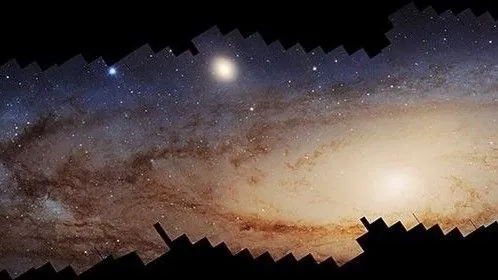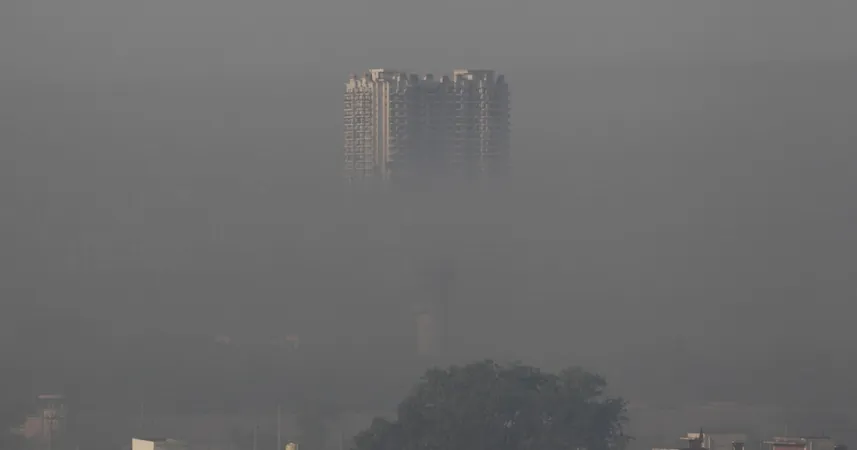
Hubble Space Telescope Unveils Most Detailed Image of Andromeda Galaxy Yet!
2025-01-23
Author: Kai
Introduction
Astronomers have recently unveiled the most comprehensive and breathtaking portrait of the Andromeda Galaxy, the Milky Way's nearest galactic neighbor, following a decade of painstaking research and image assembly. This stunning mosaic, which reveals intricate details of nearly 200 million stars, could fundamentally change our understanding of the formation and evolution of spiral galaxies throughout the universe.
The Project Overview
Initiated around 2015, the project first captured the northern half of Andromeda, resulting in a striking image composed of an astounding 100 million stars and billowing across approximately 1.5 billion pixels. Now, scientists have successfully completed the southern half, adding another 100 million stars to this galactic masterpiece.
Findings Presented at AAS Conference
Zhuo Chen from the University of Washington shared these findings at the 245th American Astronomical Society (AAS) press conference in Maryland, highlighting the groundbreaking nature of the joint image. "It's like photographing a beach and resolving individual grains of sand," Chen remarked. “For the first time, we can observe such detailed structures of an external galaxy.”
Challenges of Capturing Andromeda
From the vantage point of Earth, Andromeda appears impressive—a celestial giant six times the diameter of the full moon—which made capturing such detailed images a significant challenge. The panoramic collage required hundreds of snapshots taken over 1,000 orbits of the Hubble Space Telescope.
Significance of the New Portrait
More than just a visual feast, this new portrait is an essential resource for astronomers striving to decode Andromeda’s tumultuous journey through space. Understanding the galaxy's age, star mass, and heavy-element abundance allows researchers to test competing models predicting galaxy evolution. One theory suggests that the southern half of Andromeda experienced a major merger between 2 to 4 billion years ago, leading to intense star formation and coherent stellar streams. In contrast, the northern half seems more stable and less chaotic in structure.
Describing Andromeda's Chaotic History
"As we study Andromeda, we see evidence of its chaotic history—like a train wreck. It appears to have undergone an event that spurred immense star formation, only to calm down later," remarked Daniel Weisz of the University of California, Berkeley. This cooling period was likely linked to a collision with neighboring galaxies, one of which might be Messier 32 (M32), a galaxy resembling a stripped-down remnant of a spiral galaxy that possibly interacted with Andromeda in the past.
Implications of Cosmic Collisions
Researchers believe that such cosmic collisions could exhaust a galaxy's interstellar gas supply, thereby halting star formation—a notion supported by computer simulations. So, it’s plausible that Andromeda’s stellar lifeline has been significantly altered as a result of its encounters with other galaxies.
Holistic View of Andromeda's Disk
Thanks to the unparalleled detail provided by Hubble, astronomers can now take a holistic view of the entire disk of Andromeda—a feat that remains unattainable by studying any other large galaxy.
Conclusion
This monumental achievement not only enhances our knowledge of Andromeda but could also usher in new discoveries about the cosmos as we piece together the intricate narratives held within galaxies that dot our universe. Stay tuned for more revelations from the depths of space!



 Brasil (PT)
Brasil (PT)
 Canada (EN)
Canada (EN)
 Chile (ES)
Chile (ES)
 Česko (CS)
Česko (CS)
 대한민국 (KO)
대한민국 (KO)
 España (ES)
España (ES)
 France (FR)
France (FR)
 Hong Kong (EN)
Hong Kong (EN)
 Italia (IT)
Italia (IT)
 日本 (JA)
日本 (JA)
 Magyarország (HU)
Magyarország (HU)
 Norge (NO)
Norge (NO)
 Polska (PL)
Polska (PL)
 Schweiz (DE)
Schweiz (DE)
 Singapore (EN)
Singapore (EN)
 Sverige (SV)
Sverige (SV)
 Suomi (FI)
Suomi (FI)
 Türkiye (TR)
Türkiye (TR)
 الإمارات العربية المتحدة (AR)
الإمارات العربية المتحدة (AR)